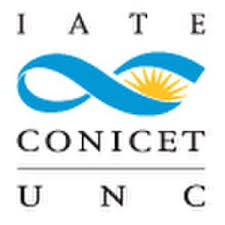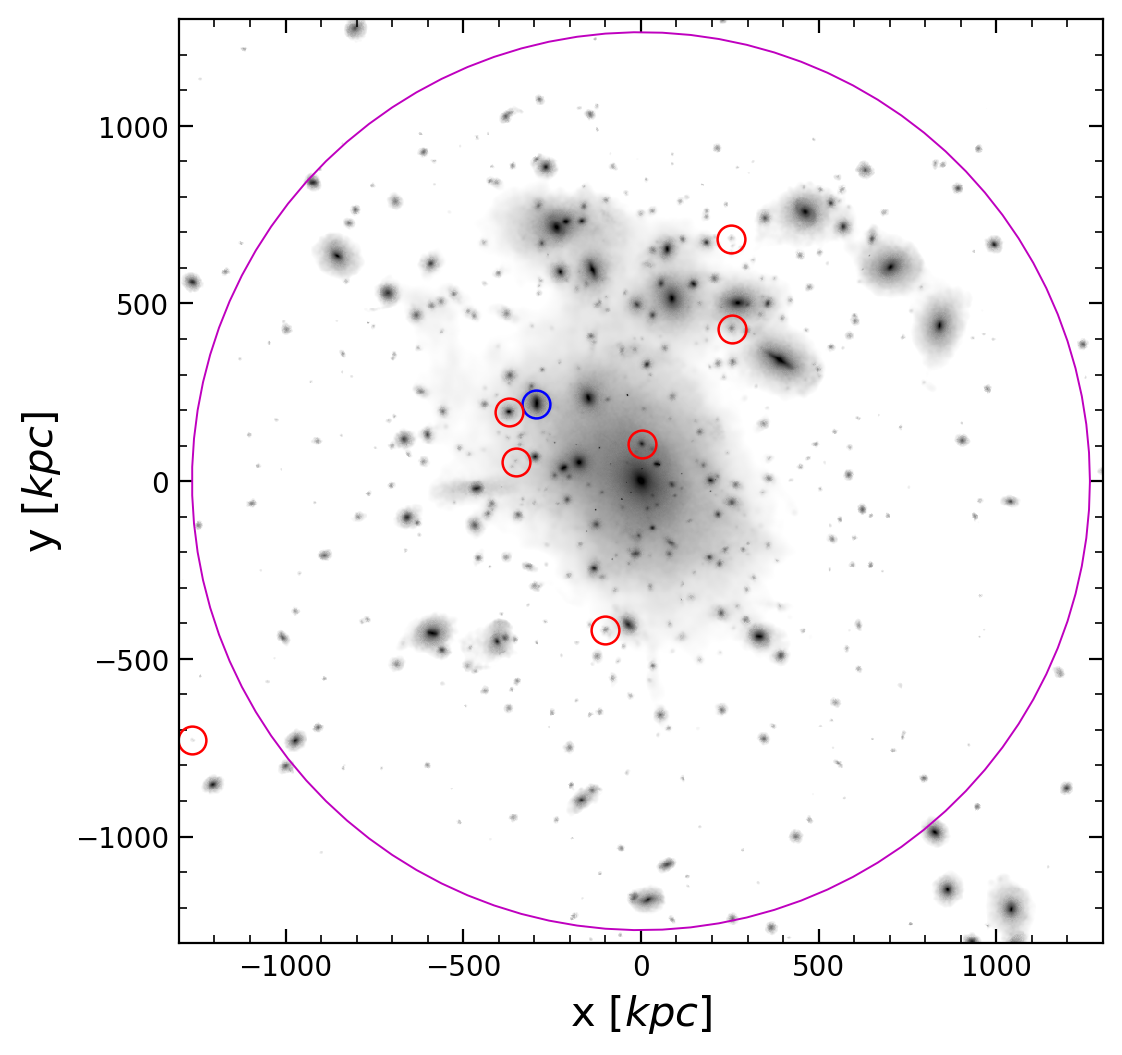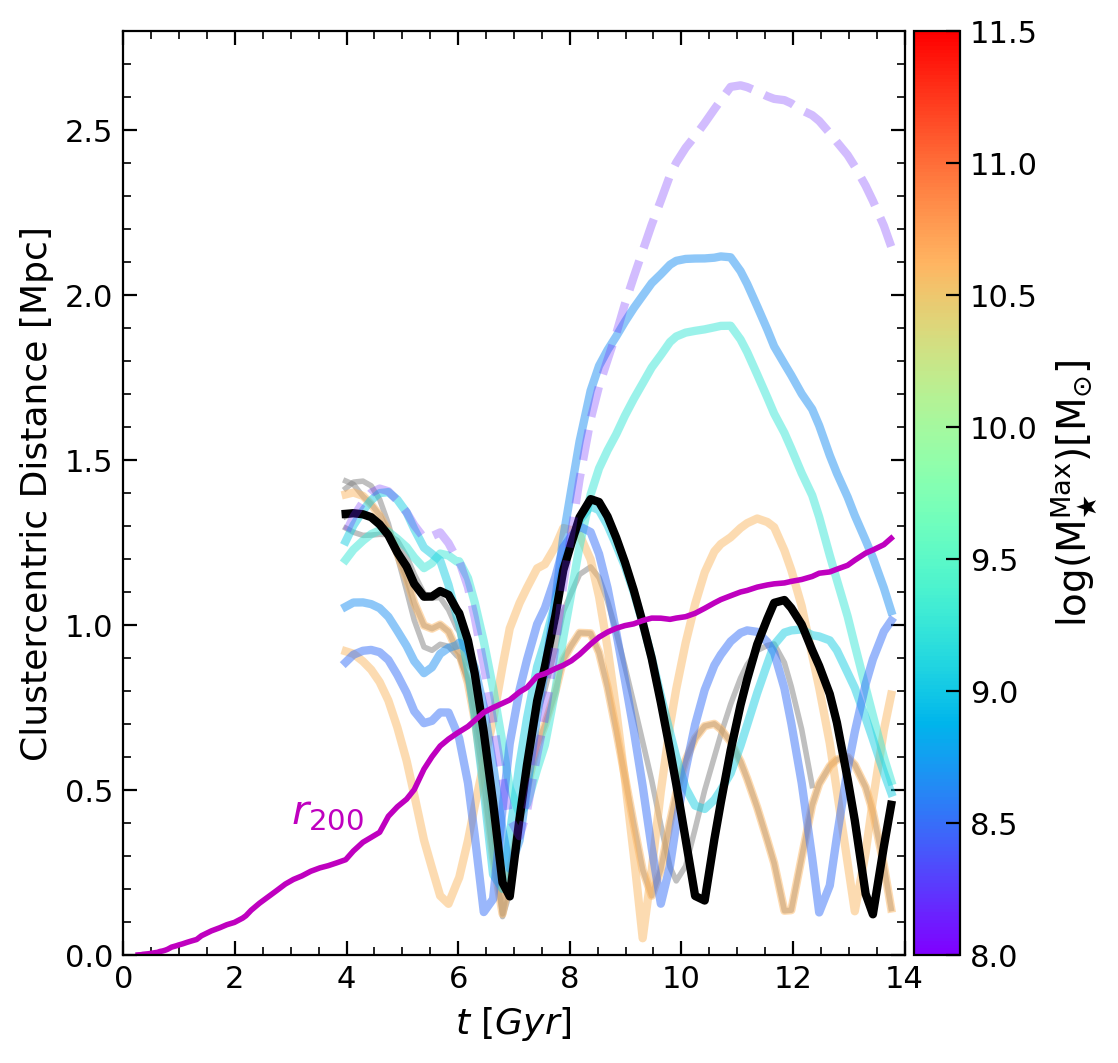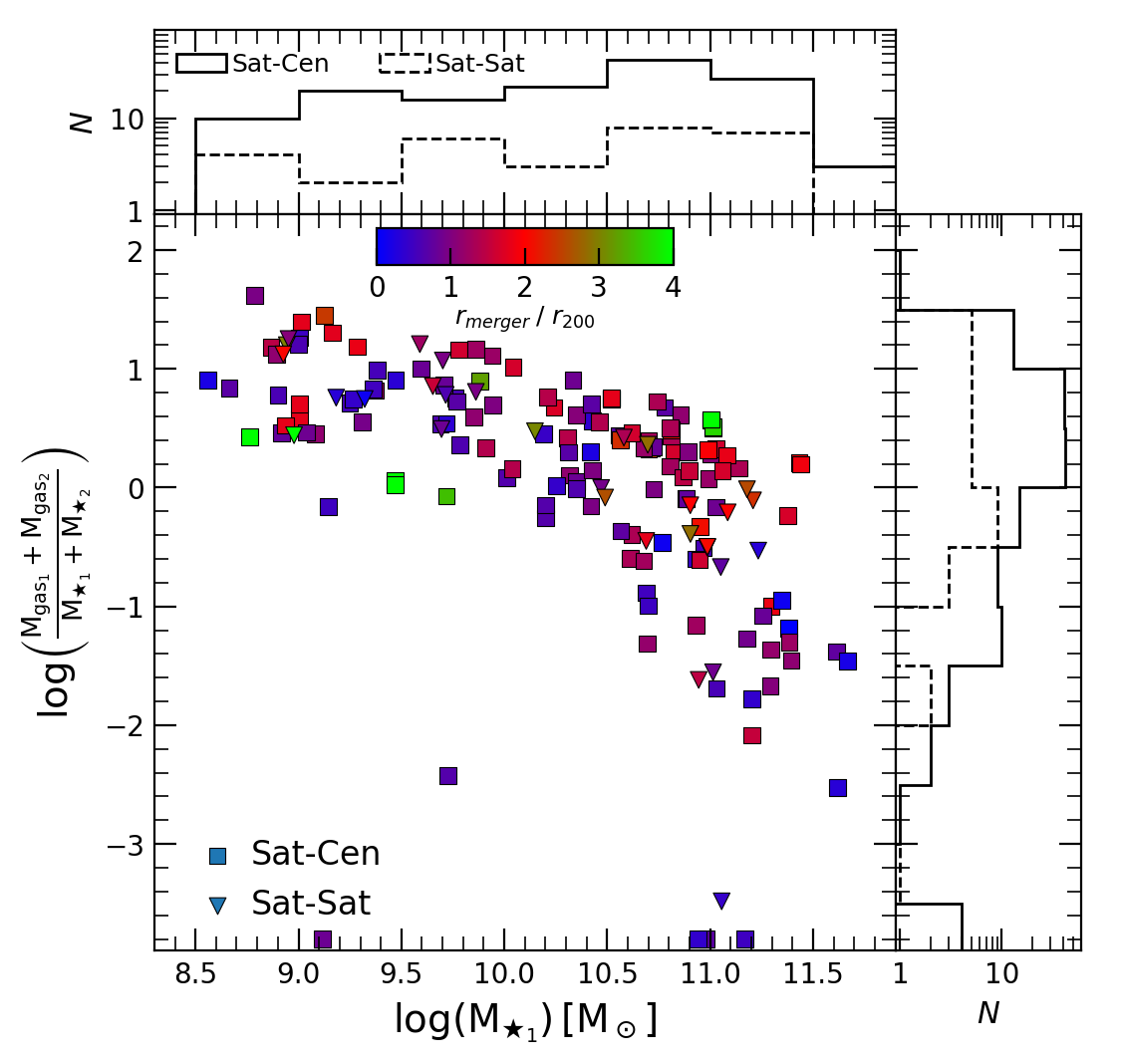Original work by: Benavides J. A., Sales L. V. & Abadi M. G. MNRAS (2020), 498, pp.3852.
Paper here
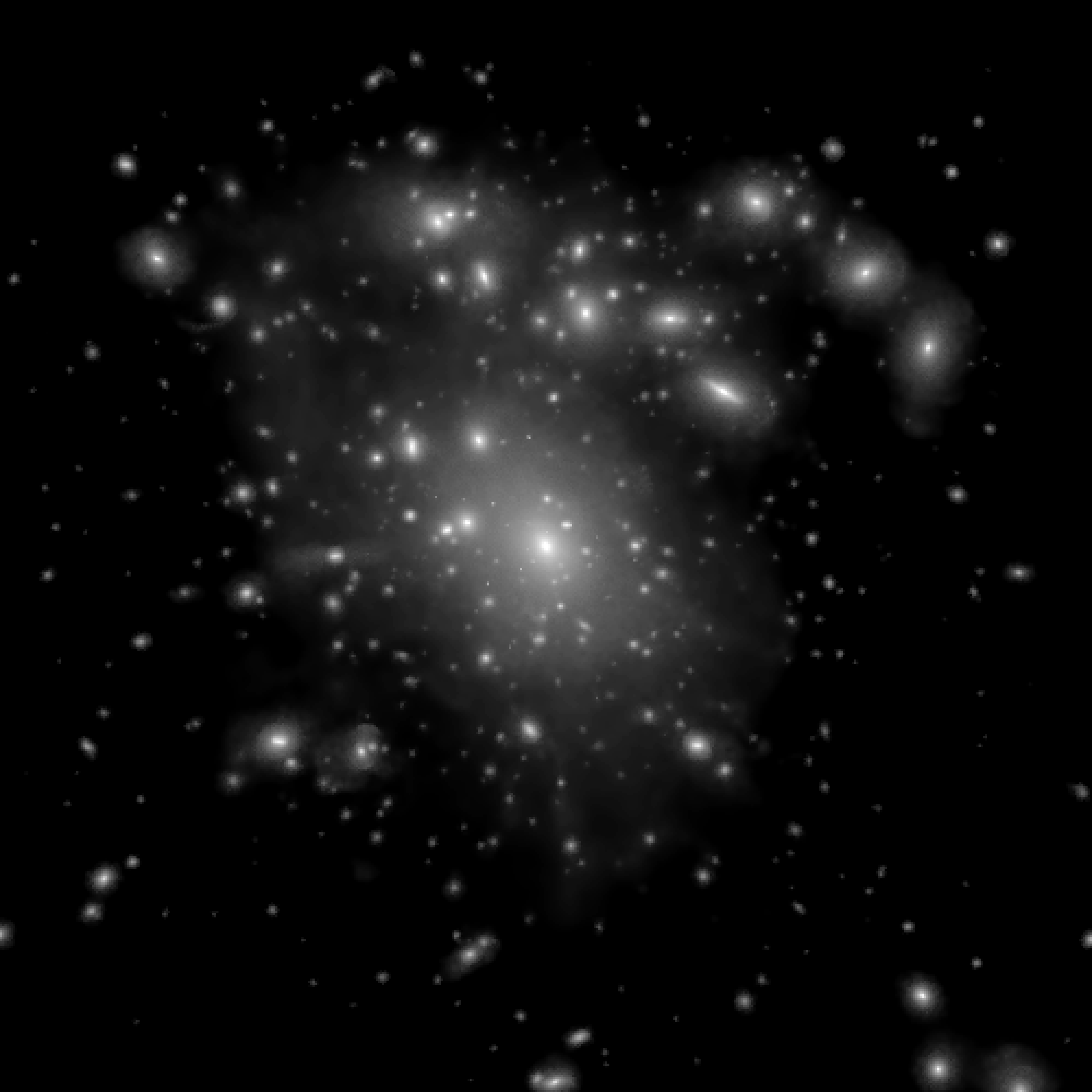
Simulated Galaxy Cluster with M200 = 2.3x1014 M⨀
Substructures of galaxies and merger remnants have been detected observationally in clusters. The typically large velocity dispersion associated with galaxy clusters, σ≈ 500-1000 km/s, makes it very unlikely for such associations to spontaneously occur after the galaxies are embedded in the gravitational potential of the clusters. These galaxy associations must therefore occur before infall, process called ``pre-processing", as the movie below shows.
Infall of galaxy group into the galaxy cluster in formation, the magente circle indicates the growth of r200 to the host halo.

